Swiss Post’s Connecta digital conference was a success on Tuesday with over 300 participants and more than 90 speakers from 12 countries. Everyyear,Connecta bringstogether experts in the field of digitalisation to exchange experiences and transfer know-how. The Bern University of Applied Scienceswas also prominently represented with four experts from the Departments of Business and Technology and Computer Science. This year’s Connecta made one thing clear: despite digitalisation, personal exchange is obviously still very much in demand. More than 90 speakers presented trends, developments and experiences from the broad field of digitalisation in well-attended plenary sessions and workshops. It was no longer just about online trade – which Swiss Post had focused on when it launched Connecta three years ago. Fake science, cybersecurity and human-machine interactions were just some of the topics addressed at the conference in Bern.
It doesn’t always have to be “big data
Kim Tokarski, Head of Continuing Education at BFH Wirtschaft, addressed the audience at the beginning of his session on “Data-based service economy” with a question: “How do you decide? According to what guidelines and patterns?” It quickly became clear that many decisions are made intuitively – not least due to a lack of time. However, one basis for decision-making is always data analysis. “Here, the opinion often prevails that this analysis is expensive and time-consuming,” said Tokarski. “But that is no longer so absolutely true today.” He used various examples to show how added value can be created with simple, target group-specific applications. For example, one of Tokarski’s employees built a dashboard for a degree programme by means of which students can put together their desired study plan and immediately see whether there are time overlaps between individual courses. “It took an hour to build that,” he explained. “But the Department of Economics waited three years for it.” His conclusion: small is beautiful. “Sometimes very simple things are enough to improve something. That’s how you create customer satisfaction.” And he also encouraged his audience to put aside any shyness they might have about data solutions. “We have had people who have never had anything to do with IT. After two days, they could build a simple dashboard.”
Privacy worth protecting
When it comes to data, the question of security is not far away. This was the question addressed by Eric Dubuis, head of the Computer Science Department and the Research Institute for Security in the Information Society (RISIS) at BFH Technik und Informatik. “Privacy is part of IT security,” he stressed. “And we must not capitulate in this regard.” His message: “Reconciling data security and privacy is sometimes difficult, but doable,” he said. He used public transport to show how this could work. Today, everyone can still decide for themselves whether to buy their ticket anonymously at a ticket machine or use applications such as fairtiq or lezzgo, thereby automatically revealing personalised information about their respective whereabouts to the respective providers. In the future – Dubuis predicts – using public transport may only be possible with a smartphone. “We therefore looked for solutions that would not allow providers to personalise the tracking of users.” The BFH researchers found what they were looking for with a combination of two IT building blocks, namely group signature and homomorphic encryption. This makes it possible to determine which services a commuter has received, but not at what time he was where. Tracking would thus be depersonalised. His conclusion: “In order to be able to exploit the positive sides of digitalisation, new solutions are often needed
Connected cities
New approaches are also needed when it comes to the city of the future. Stephan Haller from the Institute Public Sector Transformation at BFH Wirtschaft showed where the digital transformation is leading us in his workshop “On the way to the digital city”. Among other things, Haller has worked on a European-Japanese research project on “smart cities”. “When we talk about ‘smart cities’, there are two visions,” he said at the beginning of his presentation. “In one, everything is green and peaceful, everyone is happy. On the other side, there is total surveillance of the citizen, a punitive system for misbehaviour – no one really wants to go there.” Rather, he says, it is about increasing the quality of life. “That’s why it’s not just a technology issue,” says Haller. “The technology is just there to support it.” The digital transformation affects the whole of society, but it is in the cities with their increasing population that many challenges manifest themselves first, such as environmental pollution and resource consumption. That is why research is also focusing on cities. In Switzerland today, many cities are on the way to becoming a “smart city”, but they often remain stuck in individual pilot projects. “We have to get to the point where we learn from each other,” he said. “And also in terms of technical solutions. This will make municipalities less dependent on technology giants.” This networking idea is represented by various international and national platforms – in Switzerland, for example, the “smart city hub”. To Haller’s regret, only German-speaking Swiss cities are represented in the latter. On the other hand, efforts are underway to improve monitoring, i.e. to map what has already been achieved with regard to the smart city. “Tools for this are being developed,” says Haller.
How digital natives work
One population group is likely to be particularly involved in building the “city of the future”: The “digital natives”. They were the focus of Katinka Weissenfeld’s presentation. The BFH lecturer in project management asked whether those born after 1980 have heralded the end of project management. To illustrate this, she placed two employees of a company next to each other in a fictitious example, a young woman and an older man. This example quickly showed the problems that can arise when the two generations meet. “Digital natives expect work to be fun and meaningful. They work fast, independent of location and communicate directly,” says Weissenfeld. Multi-tasking is important, as is constant availability – there are no fixed working hours. Many projects, on the other hand, are characterised by rigid structures, clear hierarchies, predefined processes and budget plans as well as method fetishism. “This is not where the digital natives find themselves,” Weissenfeld emphasised. Rather, digital natives orient themselves to the guiding principles of the “agile manifesto” (which originates from computer science). They are:
- The individual is above processes.
- The system is central.
- The customer’s well-being is above the conclusion of a contract, which means that work can begin even if a contract has not yet been concluded.
- And finally: change is desired.
So is classic project management a relic of bygone times? Weissenfeld answered this question diplomatically: “No, digital natives do not stand for the end of project management but for the dawn of agile project management.”
 Create PDF
Create PDF

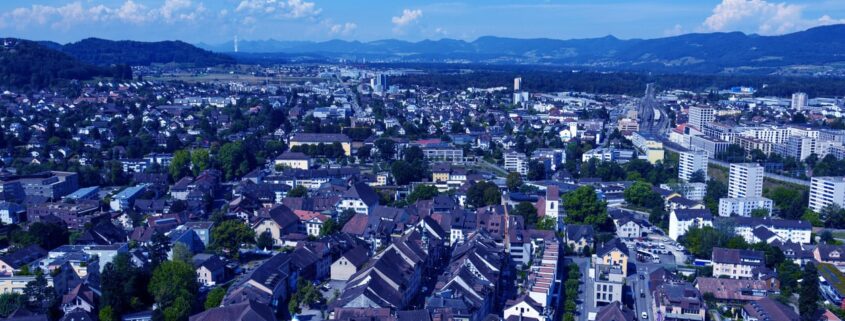

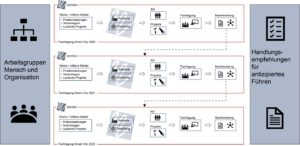


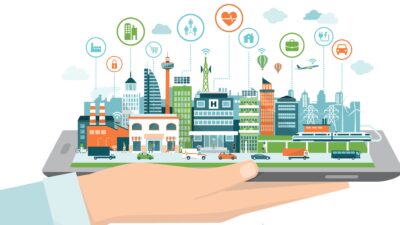
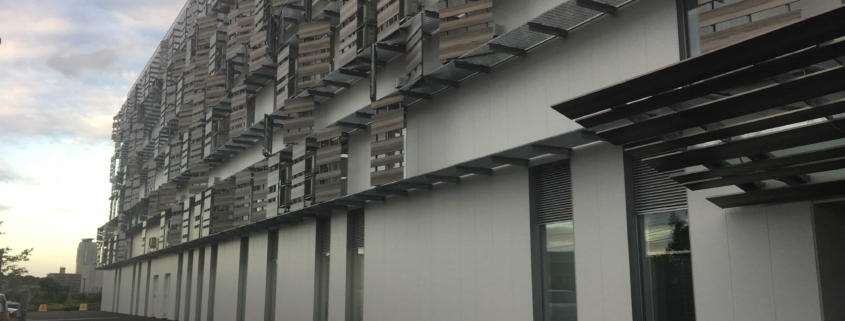
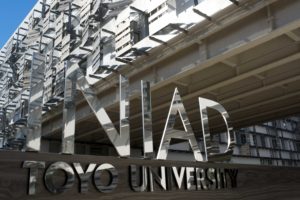
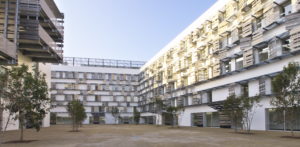


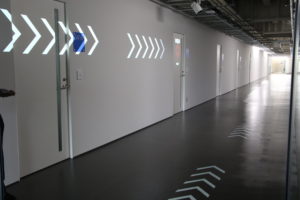
 The goal of an innovation platform is ambitious. It is not just about realising a technical platform, or connecting complementary technologies such as the Internet of Things, Big Data and Cloud. Other projects do that too. Smart City Innovation means that the platform, or new applications and services based on the platform, provide real added value for society and for the actors in the city – residents, visitors, private companies and the public administration. To achieve this, the platform must be open, both in terms of the integration of other data sources and the access of third parties to the data (keyword: open data), naturally in compliance with data protection. In the urban environment, the integration of open public authority data is of particular interest. The project benefits from the fact that more and more authorities are following this trend and publishing their data on open data portals – in Switzerland, for example, on opendata.swiss, but the city of Zurich is also one of the pioneers in this field. CPaaS.io will go one step further here and also make the relevant data available as Linked Data. This means that the data is semantically annotated and also provided with metadata, e.g. on the provenance and quality of the data. Only this enables a simplified machine integration and use of the data in further applications. This can be used during large events, for example: In which direction do streams of visitors move? How has public transport been adapted to the current situation? How is the system reacting to dangerous situations, accidents, weather conditions, etc.? In order to identify beneficial applications for society, to implement them in the project, and thus to be able to validate the benefits of the platform, the involvement of cities is of central importance. To this end, the project has been able to initiate cooperation with several cities that already have experience in the areas of Open Data or Smart City. In Europe, these are Amsterdam, Murcia and Zurich, and in Japan Sapporo, Yokosuka and Tokyo. Field trials are planned in several of these cities. We are convinced that the longer we have more and more data, the more important it becomes to be able to master the social and economic challenges. Based on data infrastructures like the ones CPaaS.io will deliver, new applications and services will be offered and transparency will be increased. And for cities, this will become an important location factor, because innovative companies will prefer to settle where such platforms are available that they can use to provide their services.
The goal of an innovation platform is ambitious. It is not just about realising a technical platform, or connecting complementary technologies such as the Internet of Things, Big Data and Cloud. Other projects do that too. Smart City Innovation means that the platform, or new applications and services based on the platform, provide real added value for society and for the actors in the city – residents, visitors, private companies and the public administration. To achieve this, the platform must be open, both in terms of the integration of other data sources and the access of third parties to the data (keyword: open data), naturally in compliance with data protection. In the urban environment, the integration of open public authority data is of particular interest. The project benefits from the fact that more and more authorities are following this trend and publishing their data on open data portals – in Switzerland, for example, on opendata.swiss, but the city of Zurich is also one of the pioneers in this field. CPaaS.io will go one step further here and also make the relevant data available as Linked Data. This means that the data is semantically annotated and also provided with metadata, e.g. on the provenance and quality of the data. Only this enables a simplified machine integration and use of the data in further applications. This can be used during large events, for example: In which direction do streams of visitors move? How has public transport been adapted to the current situation? How is the system reacting to dangerous situations, accidents, weather conditions, etc.? In order to identify beneficial applications for society, to implement them in the project, and thus to be able to validate the benefits of the platform, the involvement of cities is of central importance. To this end, the project has been able to initiate cooperation with several cities that already have experience in the areas of Open Data or Smart City. In Europe, these are Amsterdam, Murcia and Zurich, and in Japan Sapporo, Yokosuka and Tokyo. Field trials are planned in several of these cities. We are convinced that the longer we have more and more data, the more important it becomes to be able to master the social and economic challenges. Based on data infrastructures like the ones CPaaS.io will deliver, new applications and services will be offered and transparency will be increased. And for cities, this will become an important location factor, because innovative companies will prefer to settle where such platforms are available that they can use to provide their services.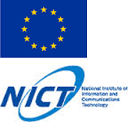 The project is funded by the European Union’s Horizon 2020 Research and Innovation Programme (Grant Agreement n° 723076) and NICT in Japan (Management Number 18302).
The project is funded by the European Union’s Horizon 2020 Research and Innovation Programme (Grant Agreement n° 723076) and NICT in Japan (Management Number 18302). Contributions as RSS
Contributions as RSS